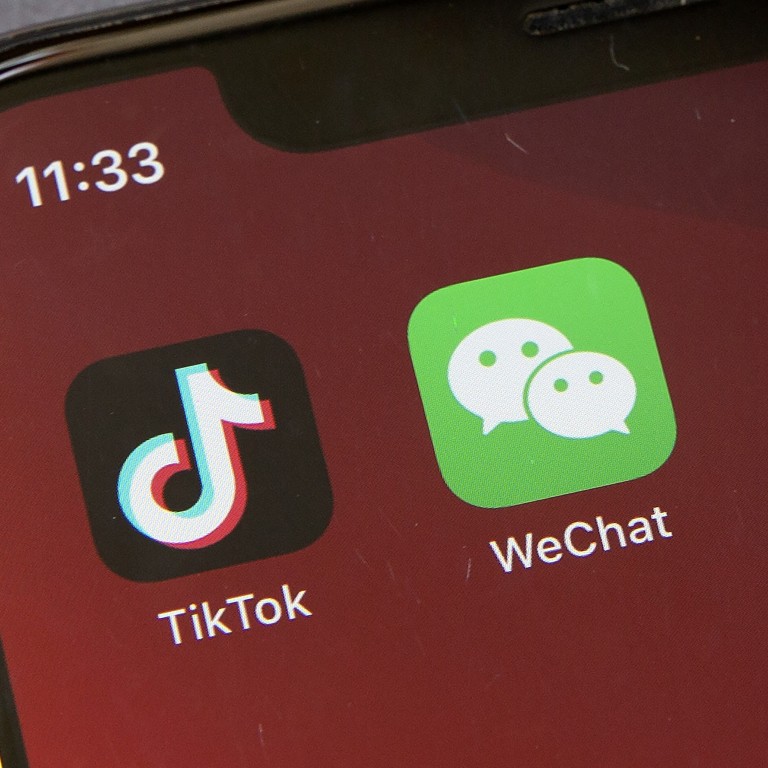
The future of China’s most popular app WeChat is short videos and live streaming, says creator Allen Zhang
- WeChat is a relatively late entrant in the short video and live-streaming market, which has seen a surge in popularity during the coronavirus pandemic
- Over the past five years, the number of daily video messages posted on WeChat has increased 33 times while video content on WeChat Moments is up tenfold
The future of China’s ubiquitous messaging and social media app WeChat will be video and live streaming, according to its creator Allen Zhang, a move that will put the super app in direct competition with rivals ByteDance and Kuaishou.
“Video expression will be a major theme for the next 10 years of content generation,” Zhang told an audience at WeChat’s annual developer conference on Tuesday.
The do-everything app’s current short video feature, Channels, will make video an easy way for everyone to express themselves, not just online celebrities and key opinion leaders, he added.
WeChat, operated by Chinese tech giant Tencent Holdings, launched a beta test of Channels in January last year and by the end of June it had accumulated 200 million users. Over the past five years, the number of videos sent in chats daily by WeChat users has increased 33 times while video content on WeChat Moments – a feature similar to Facebook’s News Feed – has increased tenfold.
Zhang, however, is not limiting the platform to just short video. He also wants to explore live-streaming, pointing out that it has lower barriers than short video when it comes to creating and consuming.
How WeChat, Tencent’s 10 year old super app, changed China’s online world
“Live streaming has been in development for many years, but most people still view it from the perspective of e-commerce,” Zhang said. “In the future, live streaming will be how people express themselves.”
WeChat’s Channels has already laid down the foundations for future live-streaming functions, Zhang said. Starting from last July, a small group of content creators has been able to access the live-streaming function in beta mode.
Although the current version of WeChat does not have a standalone live-streaming portal, Zhang said that feature could be available via the app’s next update.
The WeChat team is also developing features to link live-streaming e-commerce to third-party mini programs on the platform, Zhang said. WeChat will also introduce a new feature to enable live-streamed greetings to be sent over the Lunar New Year holiday in February, he added.
WeChat is a relatively late entrant in the short video and live-streaming market, which has seen a surge in popularity during the coronavirus pandemic. China had 818 million short video users at the end of June 2020, according to a report released in October by the China Netcasting Services Association. ByteDance’s Douyin and Tencent-backed Kuaishou, with 600 million and 305 million daily active users respectively, are the two dominant players in the market.
Like WeChat, both apps have been aggressively expanding into live streaming, which has emerged as a major new e-commerce sales channel in China. In a filing last week for a planned initial public offering, Kuaishou reported 204.1 billion yuan (US$31.5 billion) in gross merchandise value (GMV) for the first nine months of 2020, compared with 97 million yuan for the full year of 2018. Douyin’s e-commerce business is projected to reach around 150 billion yuan in GMV in 2020, Reuters reported in November.
WeChat’s move into short video is later than expected but it is growing faster than rivals on the back of its huge user base, said Zhang Dingding, an internet industry commentator and former head of Beijing-based research firm Sootoo Institute.
“The development of Douyin and Kuaishou are testaments that videos can connect to other services such as e-commerce, which would mean a billion-dollar opportunity for Channels,” Zhang said.
In February last year, WeChat added a live-streaming function to its mini programs – apps that run within WeChat itself – and as of last September about 100,000 merchants had used the function, according to data from WeChat.


